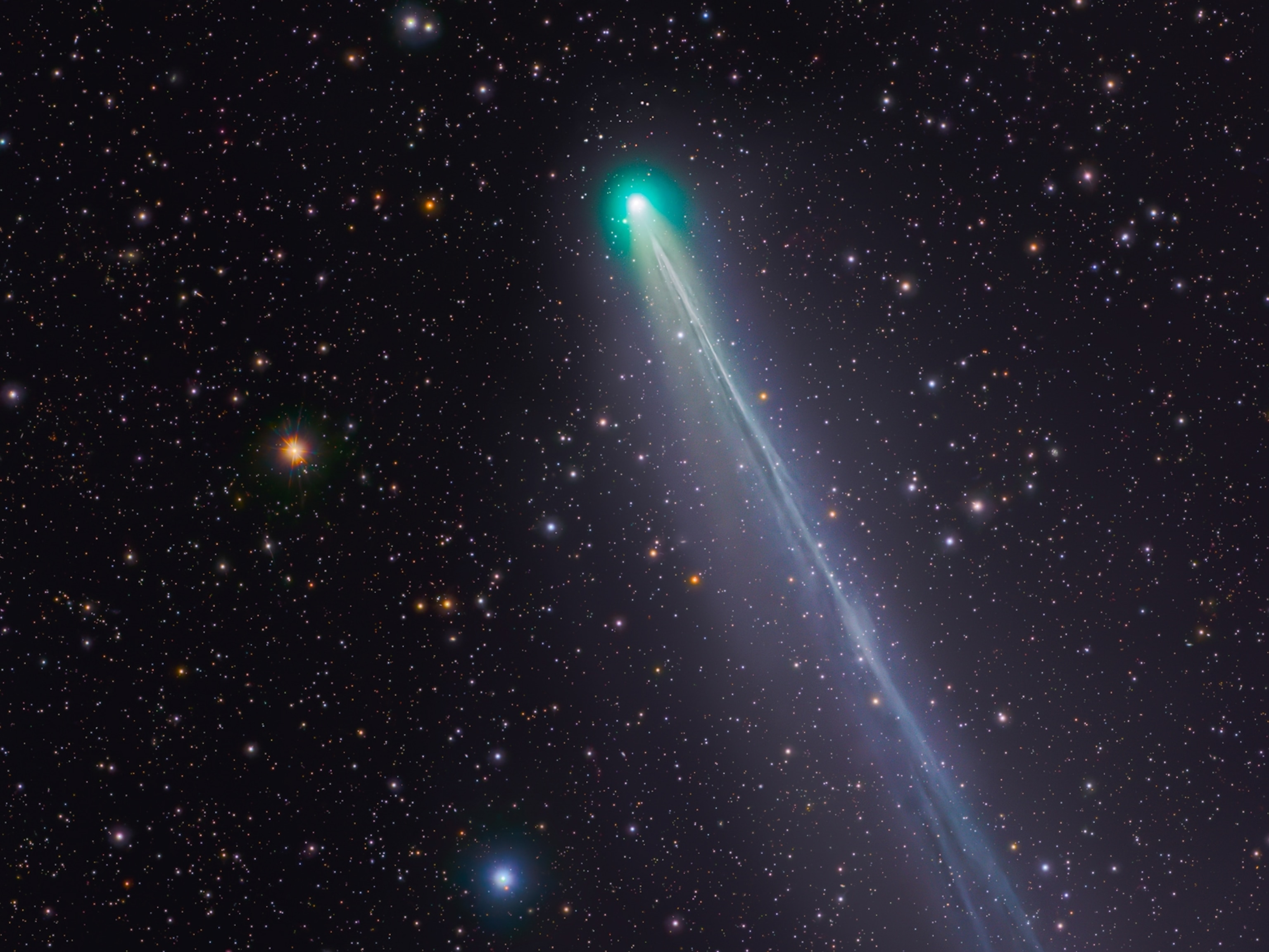
Comet Seen Vaporizing in Sun's Atmosphere—A First
NASA craft tracks last moments of a death-diving comet.
For the first time, a death-diving comet has been observed as it vaporized in the sun's atmosphere, thanks to new data from a NASA satellite.
More than a thousand known comets are so-called Kreutz sungrazers, a family of icy bodies that pass very near to the sun's surface on their orbits through the solar system.
(Related: "'Suicide' Comet Storm Hits Sun—Bigger Sun-Kisser Coming?")
Using NASA's Solar and Heliospheric Observatory (SOHO), astronomers are able to spot many of these sungrazers as they get close to our star.
That's because SOHO carries a key instrument that has an occulting disk, a circle that blocks out the glare of the sun's main body so scientists can study the star's faint upper atmosphere, or corona.
So far, most of SOHO's documented sungrazer deaths involved comets breaking up at a distance or simply vanishing behind the occulting disk.
"Some of them made it behind the disk, and none of them came out on the other side," said solar physicist Karel Schrijver, a fellow at the Lockheed Martin Advanced Technology Center in Palo Alto, California.
Now, using a variety of data from NASA's Solar Dynamics Observatory (SDO), astronomers have been able to watch a sungrazer's last moments as it disintegrated inside the sun's atmosphere.
The observations should provide valuable information about both comets and the sun, said Schrijver, who led a new study on the sungrazer and its fate.
Comet Like a "Smallish Aircraft Carrier"
Before it completely disintegrated, comet C/2011 N3 got within 60,400 miles (97,200 kilometers) of the sun's surface, close enough to be inside the lower corona.
C/2011 N3's journey also took the comet inside the sun's magnetic field, which could be seen interacting with the comet's bright tail.
Another recent sungrazer, Comet Lovejoy, skimmed the sun's surface in December 2011 and survived the encounter. That comet showed even stronger tail perturbations in the corona—"we saw it flit around from left to right," Schrijver added.
(See pictures: "Lovejoy Dazzles Holiday Sky-Watchers.")
Both comets' positions put them at a transition point, right about where the sun's magnetic field begins to accelerate the particles that form the solar wind—charged particles that are constantly streaming from the sun in all directions.
"If we study the tail, we can learn about the structure [of the sun's magnetic field] that we cannot see otherwise" and perhaps learn more about the solar wind, Schrijver said.
By combining previous knowledge of the comet's composition with the new SDO observations of how quickly the comet vaporized, Schrijver and colleagues were able to estimate the mass of the comet: 60,000 metric tons. "So it's a smallish aircraft carrier," he said.
This is the first time a comet's mass has been determined so precisely, excluding the handful of comets that have been directly imaged by visiting spacecraft. (Also see "Pictures: 'Deep Impact' Comet Revealed by NASA Flyby.")
But unlike a military ship gliding through the water at a few miles an hour, C/2011 N3 was flying "through the atmosphere at 600 kilometers [372 miles] per second."
In fact, the comet was moving so quickly that it was almost too fast for SDO to observe.
"The current generation of instruments is so good that the blurring is only slightly more than the instrument" can handle, Schrijver said.
Next: Comet Impact Captured?
With SDO as a proven comet tracker, astronomers should now be able to study many more comets as they skim the surface of the sun.
"We know what to do should another [sungrazer] materialize. We're going to point multiple spacecraft at it and observe it," Schrijver said.
No comets have been seen to actually impact the sun yet, but Schrijver isn't ruling out the possibility: "That," he said, "would make a splash."
The sungrazer-comet study was published in this week's issue of the journal Science.





